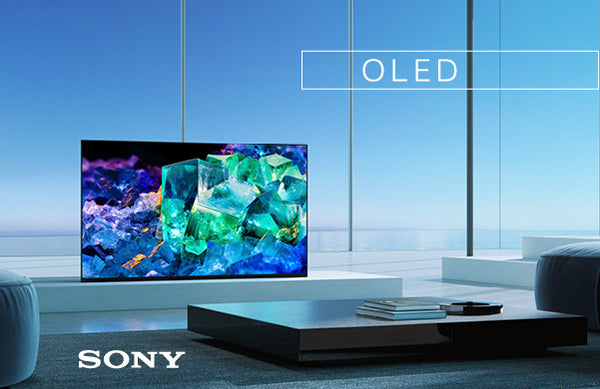
Exploring the benefits of OLED TVs: a guide to understanding OLED technology
OLED TVs are one of the latest revolutions in television technology, offering an immersive viewing experience with superior contrast and more vivid colors. OLED (Organic Light Emitting Diode) displays use organic materials to produce light and offer several advantages over traditional LCD and LED displays.
This guide will explain the benefits of OLED technology and help you decide if it's the right option for your home entertainment setup. If you're looking for an unbeatable viewing experience, OLED technology is a great choice.
Advantages of OLED technology
OLED technology offers several advantages over traditional LCD and LED displays. In an LCD/LED display, a backlight is used to produce light, which can make the image look washed out or dull. OLEDs do not need a backlight because each pixel produces its own light. OLEDs produce light from organic materials rather than from a backlight, which means they are thinner and lighter than LCDs making them perfect for wall displays.
OLEDs also produce brighter, more vivid images with deeper black levels and wider viewing angles. OLEDs also have a faster response time than LCDs, resulting in smoother action scenes and less motion blur. For these reasons, OLEDs are often considered the best choice for home entertainment systems.
Finally, OLEDs are more energy efficient than LCDs, consuming less power and helping to reduce your electricity bill.
How OLED works
OLED technology is based on the principle of electroluminescence, which is the phenomenon whereby a material emits light when an electric current is applied to it. OLEDs use a thin film of organic materials that emit light when an electric current is applied. This organic light-emitting diode (OLED) technology is used in displays to create an image on a screen. Each pixel of an OLED display emits its own light and can be turned on or off individually.
OLED displays are made up of several layers. The first layer is the substrate, which is the base of the display. This layer is usually made of glass or plastic and provides the structural support for the display. The second layer is the emitter layer, which is made of organic materials that emit light when an electric current is applied. The third layer is the anode, which is responsible for carrying the electric current. Finally, the cathode layer is in charge of evacuating the electric current from the screen.
Factors to consider when buying an OLED TV
When choosing an OLED TV, there are several factors to consider:
- Its size: OLED TVs come in different sizes, from small 32-inch models to large 77-inch models.
- The resolution of the TV set as higher resolutions will produce a sharper picture.
- The refresh rate of the TV: higher refresh rates produce smoother motion.
- The HDR compatibility of the TV, as some TVs are only compatible with certain types of HDR content.
- TV features where some models may have additional features such as voice control or Wi-Fi connectivity.

Tips for getting the most out of an OLED TV
Once you have an OLED TV, there are several tips you can follow to get the most out of it.
The first is to make sure the TV is properly calibrated. This will ensure that the colors and brightness levels are accurate and that the picture is as clear and vivid as possible. You need to make sure you are using the appropriate settings for the type of content you are watching, as different settings may give better results for movies or sports.
Another tip is to make sure your TV is connected to a good sound system. OLED TVs usually have built-in speakers, but they may not be powerful enough to produce good sound. A good audio system will make the viewing experience more immersive and enjoyable.
Finally, you should consider investing in a TV stand or wall mount to keep your TV off the floor and maintain a better viewing angle.
Conclusion
In short, this technology allows for better picture quality because it allows for deeper blacks, more vibrant colors and higher contrast. OLED TVs also have wider viewing angles than traditional LCD TVs, which means that images remain sharp and clear even if you're not directly in front of the screen.
OLED TVs are generally considered one of the best choices for movie and video game enthusiasts due to their outstanding picture quality. However, they are generally more expensive than LCD TVs, which can be a factor to consider when purchasing.
Visit our store to see a demonstration of the three major OLED brands: Samsung, Sony and LG. Our consultants will guide you according to your needs.






